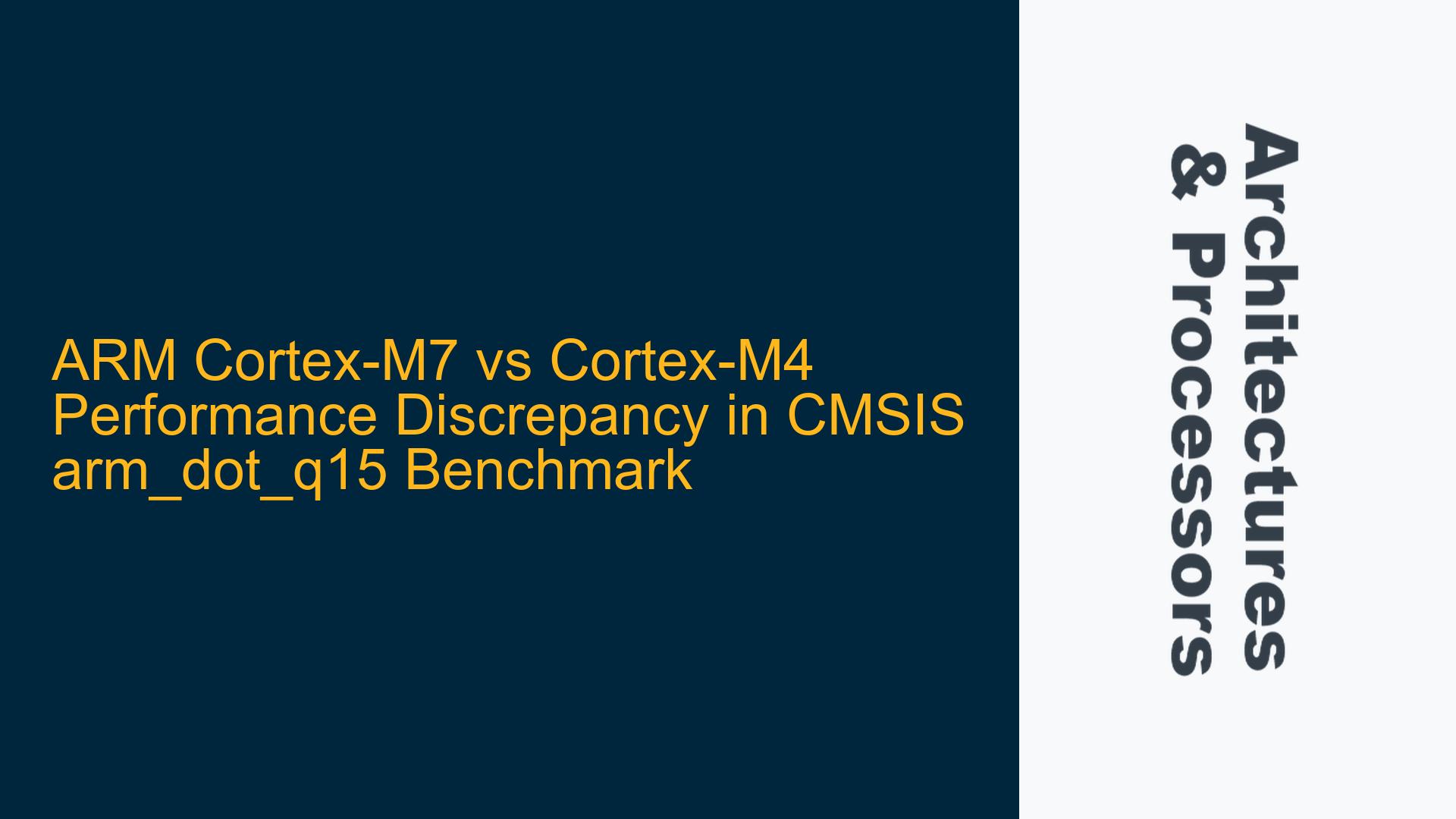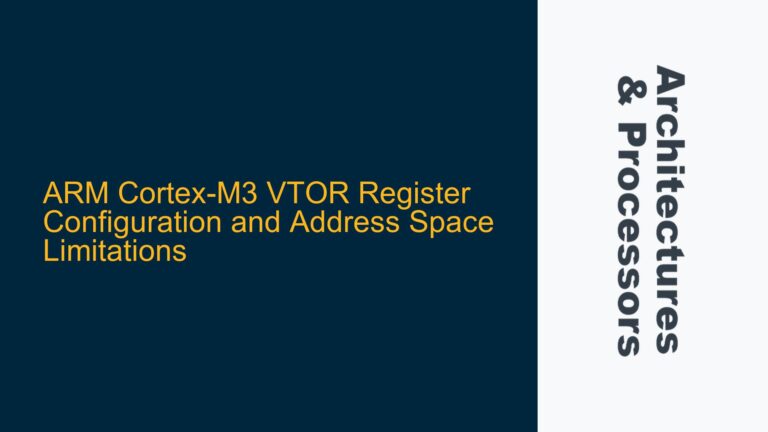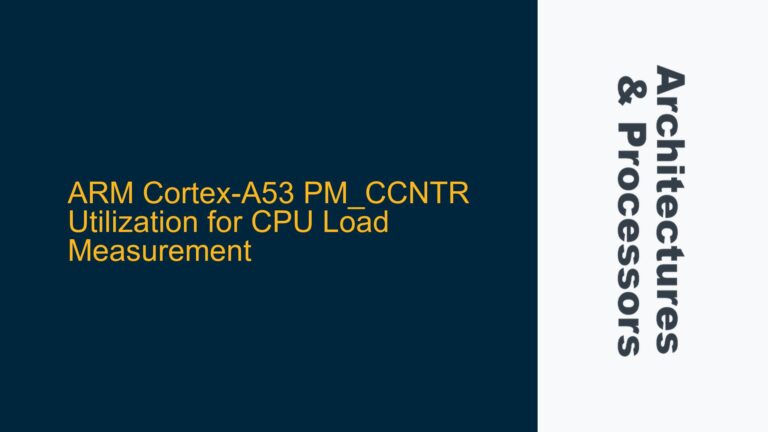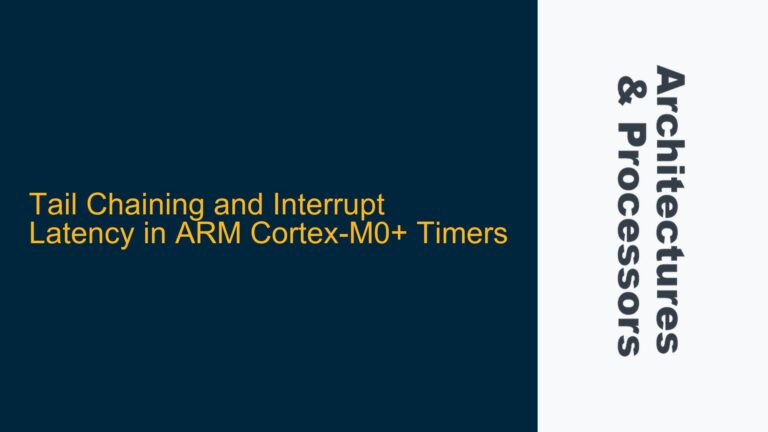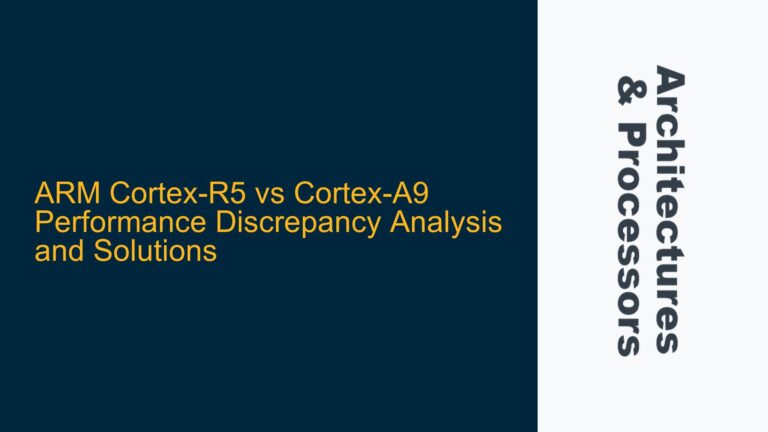ARM Cortex-M7 and Cortex-M4 Cycle Count Parity in arm_dot_q15
The ARM Cortex-M7 and Cortex-M4 are both widely used microcontroller cores, but they are designed for different performance tiers. The Cortex-M7 is a higher-performance core with features like a dual-issue superscalar pipeline, branch prediction, and optional cache, while the Cortex-M4 is optimized for lower power consumption and cost-sensitive applications. When running the CMSIS-DSP function arm_dot_q15, which computes the dot product of two Q15 fixed-point vectors, the expectation is that the Cortex-M7 should outperform the Cortex-M4 due to its architectural advantages. However, in this case, both cores report the same cycle count of 934 cycles, which raises questions about the benchmarking methodology and the underlying hardware-software interactions.
The arm_dot_q15 function is a computationally intensive operation that involves multiplying corresponding elements of two vectors and accumulating the results. The performance of this function is influenced by several factors, including the efficiency of the core’s arithmetic logic unit (ALU), memory access patterns, and the presence of hardware accelerators like the Single Instruction Multiple Data (SIMD) unit. The Cortex-M7’s dual-issue pipeline and optional SIMD capabilities should theoretically allow it to complete this operation faster than the Cortex-M4. However, the observed parity in cycle counts suggests that either the benchmarking setup is flawed or the Cortex-M7’s advantages are not being fully utilized.
Memory System Simulation and Cycle Counting Methodology
The cycle counting methodology used in this benchmark involves the Data Watchpoint and Trace (DWT) unit, which is a standard feature in ARM Cortex-M cores for performance profiling. The DWT unit provides a cycle counter that can be used to measure the execution time of code segments. The code snippet provided initializes the DWT cycle counter, runs the arm_dot_q15 function, and then reads the cycle count. However, the benchmark explicitly states that the memory system is not simulated, which means that the cycle count does not account for the time required for memory accesses.
The absence of memory system simulation is a critical limitation in this benchmark. The Cortex-M7’s performance advantages, such as its higher clock speed, wider bus interfaces, and optional cache, are most evident when dealing with memory-intensive operations. Without simulating the memory system, the benchmark is effectively measuring only the core’s computational performance, which may not fully reflect the Cortex-M7’s capabilities. Additionally, the Cortex-M7’s dual-issue pipeline and SIMD unit may not be fully utilized if the data is not readily available in the core’s registers or cache.
Another potential issue with the cycle counting methodology is the use of volatile pointers to access the DWT registers. While volatile ensures that the compiler does not optimize away the memory accesses, it does not guarantee that the accesses are performed in a specific order. This can lead to inconsistencies in cycle counting, especially if the compiler reorders the instructions or if there are pipeline stalls. Furthermore, the benchmark does not account for the overhead of starting and stopping the cycle counter, which can introduce additional variability in the results.
Optimizing Benchmark Setup and Leveraging Cortex-M7 Features
To address the observed performance discrepancy, the benchmarking setup should be revised to better reflect the Cortex-M7’s architectural advantages. First, the memory system should be simulated to account for the time required for memory accesses. This can be done by placing the input vectors in different memory regions, such as SRAM, TCM (Tightly Coupled Memory), or external memory, and measuring the cycle count for each configuration. The Cortex-M7’s optional cache and TCM can significantly reduce memory access latency, and these features should be enabled and configured appropriately.
Second, the cycle counting methodology should be refined to minimize measurement overhead and ensure consistent results. This can be achieved by using inline assembly to directly access the DWT registers, avoiding the use of volatile pointers. Additionally, the benchmark should include a warm-up phase to ensure that the data is cached and the pipeline is primed before measuring the cycle count. This will help to reduce variability and provide a more accurate comparison of the cores’ performance.
Third, the arm_dot_q15 function should be optimized to take advantage of the Cortex-M7’s SIMD capabilities. The CMSIS-DSP library provides optimized implementations of many DSP functions, but these implementations may need to be tailored to the specific features of the Cortex-M7. For example, the Cortex-M7’s SIMD unit can process multiple Q15 values in parallel, which can significantly reduce the number of cycles required for the dot product operation. The benchmark should compare the performance of the standard arm_dot_q15 function with an optimized version that leverages the Cortex-M7’s SIMD unit.
Finally, the benchmark should be run on actual hardware rather than a simulation environment. Simulation environments may not accurately model the behavior of the memory system or the core’s pipeline, leading to misleading results. Running the benchmark on actual hardware will provide a more realistic comparison of the Cortex-M7 and Cortex-M4’s performance.
In conclusion, the observed parity in cycle counts between the Cortex-M7 and Cortex-M4 in the arm_dot_q15 benchmark is likely due to limitations in the benchmarking setup rather than a fundamental flaw in the Cortex-M7’s architecture. By simulating the memory system, refining the cycle counting methodology, optimizing the DSP function, and running the benchmark on actual hardware, it should be possible to demonstrate the Cortex-M7’s performance advantages over the Cortex-M4.
